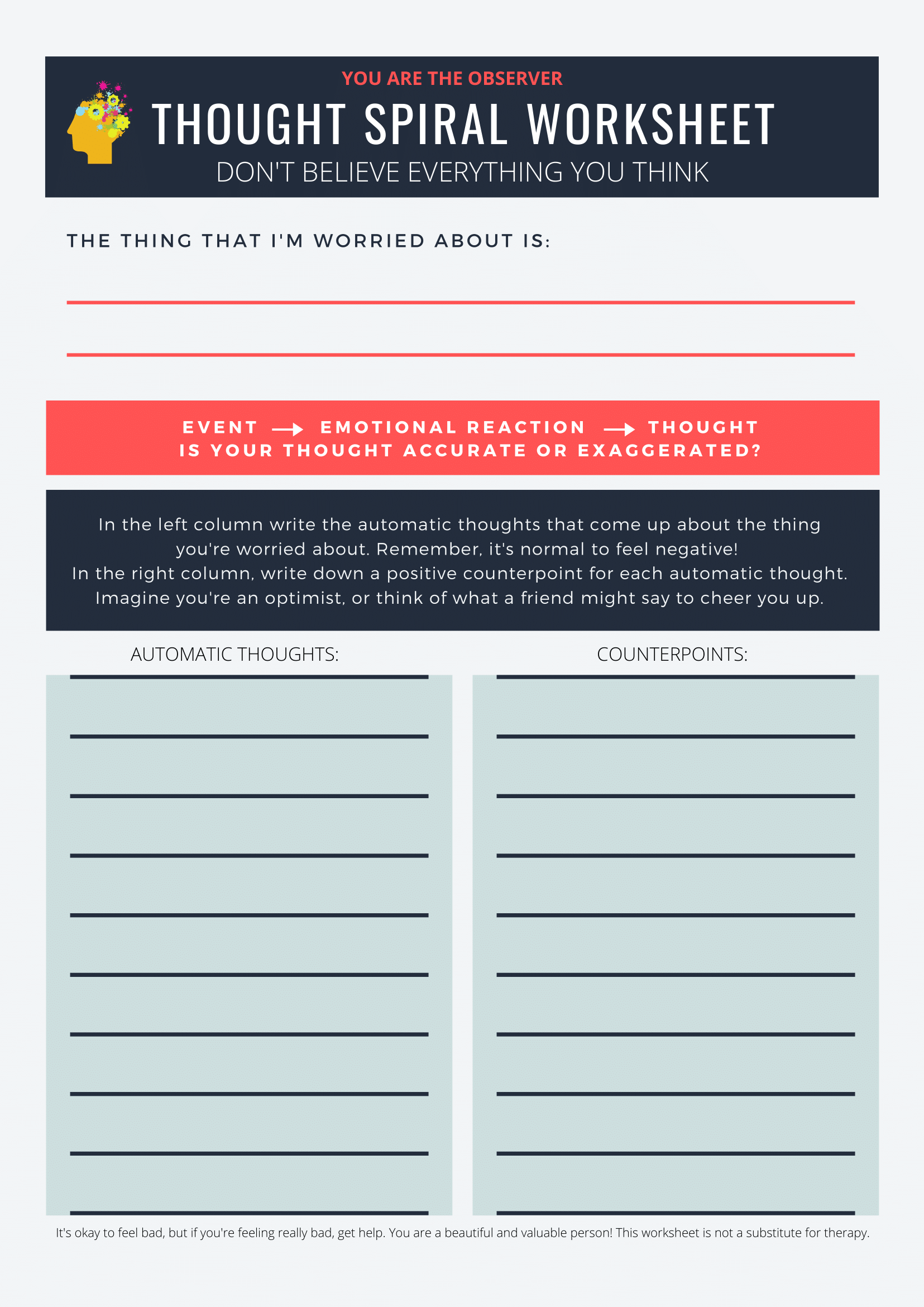Stop worst-case scenario thoughts with this simple exercise.
Thoughts can happen automatically, especially under stress. Get an upsetting phone call or email and wham! – negative thinking and worst-case scenarios flood your mind.
One thought leads to the next, causing you to feel upset, which in turn creates even more negative thoughts. It’s called the downward thought spiral, and it happens to everyone.
Negative Thinking is Normal
Thought spirals are NORMAL. There’s nothing wrong with you if you have them.
Worst-case scenario thinking is what kept humans alive as a species over the millennia. When our hunter-gatherer ancestors heard a rustle in the bushes, worst-case thinking (is that a tiger?!) inspired them to runaway.
Nowadays, the threat might come in the form of an email from your boss. Just seeing it may trigger an automatic thought: “I hope I’m not fired!” This overreaction comes from our past. Specifically, it comes from more primitive parts of our brain that alert us to any danger (real or perceived).
While eons ago this was an adaptive mechanism, today it may just stress us out, and can spiral our thoughts into negativity.
Be Smarter Than Your Brain
Left unchecked over time, our thought spirals can not only create unnecessary stress, they can lead to anxiety and depression.
That’s why it’s important to become aware of your thinking. As humans, we are blessed with a part of the brain called the neocortex, which helps us think rationally.
This “higher” part of your brain can be leveraged to stop downward thought spirals. The first step is to become the observer of your own thoughts. Getting some distance - creating a gap - in your automatic thinking helps you take control and stop the stress juggernaut.
Watch the Video: Take Control of Negative Thinking
The following is an exercise that can help you to analyze your automatic thoughts and replace them with thoughts more appropriate to reality. Watch the video [5:38] and learn more!
The Exercise
Watch the video, or simply follow these steps:
- Pick a worry, something that stresses you out. Then take a piece of paper and draw a line, creating two columns.
- On the left, write down your automatic thoughts about the thing you’re worried about. Go for it. Vent away. Then pause and observe them without judgment. The thoughts may be negative or exaggerated.
- Next, in the right-hand column, jot down counterpoints to each automatic thought. This may seem awkward, but it’s important to do.
- Calmly observe your thoughts. Don't judge them, just notice what was produced from your original worry.
The point is to train your mind to notice your automatic thoughts, and realize that they may not serve you. Do this regularly and you will develop the skill called, “don’t believe everything you think.”
Thought Spirals: The Worksheet
The more you interrupt your automatic thoughts, the quicker you'll be able to snap out of negative thought spirals. But this takes practice! That's why I'm giving you a copy of my
Thought Spiral Worksheet.
Use it to retrain your mind. With a little practice, you'll learn to RESPOND rather than react to your thoughts. You're in control!
You can learn more about thought spirals and cognitive behavioral therapy on my post,
The ABCs of CBT.




